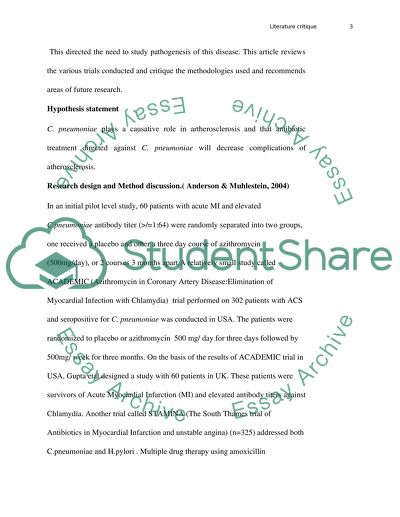Cite this document
(“Literature Critique Antibiotic Trials for Coronary Heart Disease Lab Report”, n.d.)
Literature Critique Antibiotic Trials for Coronary Heart Disease Lab Report. Retrieved from https://studentshare.org/miscellaneous/1514413-literature-critique-antibiotic-trials-for-coronary-heart-disease
Literature Critique Antibiotic Trials for Coronary Heart Disease Lab Report. Retrieved from https://studentshare.org/miscellaneous/1514413-literature-critique-antibiotic-trials-for-coronary-heart-disease
(Literature Critique Antibiotic Trials for Coronary Heart Disease Lab Report)
Literature Critique Antibiotic Trials for Coronary Heart Disease Lab Report. https://studentshare.org/miscellaneous/1514413-literature-critique-antibiotic-trials-for-coronary-heart-disease.
Literature Critique Antibiotic Trials for Coronary Heart Disease Lab Report. https://studentshare.org/miscellaneous/1514413-literature-critique-antibiotic-trials-for-coronary-heart-disease.
“Literature Critique Antibiotic Trials for Coronary Heart Disease Lab Report”, n.d. https://studentshare.org/miscellaneous/1514413-literature-critique-antibiotic-trials-for-coronary-heart-disease.


